Yakovlev Yak-1b
Expert Set
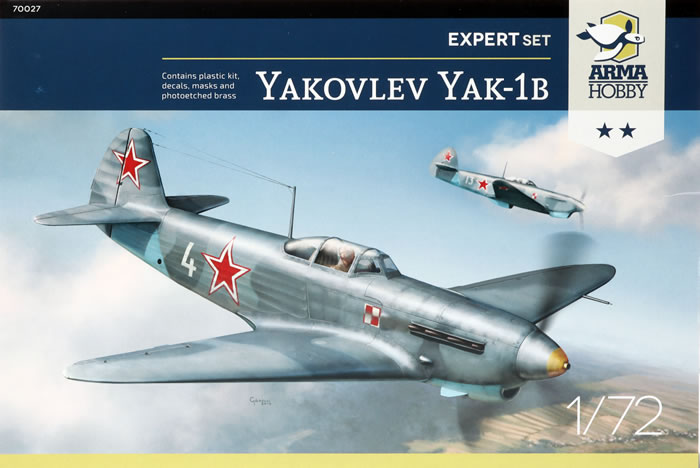
Arma Hobby, 1/72 scale
S
u m m a r y : |
Description and Item No.: |
Arma Hobby Kit No. 70027 - Yakovlev Yak-1b Expert Set |
Contents and Media: |
46 parts in grey plastic, two parts in clear plastic; 15 photo-etched parts; markings for six aircraft; die-cut self adhesive masks. |
Price: |
€14.50 plus shipping available online at Arma Hobby
£15.70 EU Price (£13.08 Export Price) Plus Shipping at Hannants
and hobby retailers worldwide |
Scale: |
1/72 |
Review Type: |
First Look |
Advantages: |
The kit features amazingly crisp and abundant surface detail especially with regard to the replication of cowl and panel fasteners. The nicely detailed cockpit comes complete with a PE instrument panel and seat harness. The beautifully printed decal sheet provides markings for 6 aircraft complete stencil data for two airframes. |
Disadvantages: |
|
Recommendation: |
This is a real gem of a kit. The engineering is simple and spot-on, the details are abundant and scale appropriate, and the fit is exemplary, exceeding that of the ARMA Hurricane and that says a lot. As the astute reader has deduced, I had no self-discipline whatsoever and started this little hummer as soon as the parts were photographed. This kit drops together with practically no issues and is a joy to build. . |
Reviewed by John Miller

The Yakovlev Yak-1 was a monoplane, single-seat, World War Two, Soviet fighter aircraft of composite structure that utilized wooden wings. Production began in early 1940.
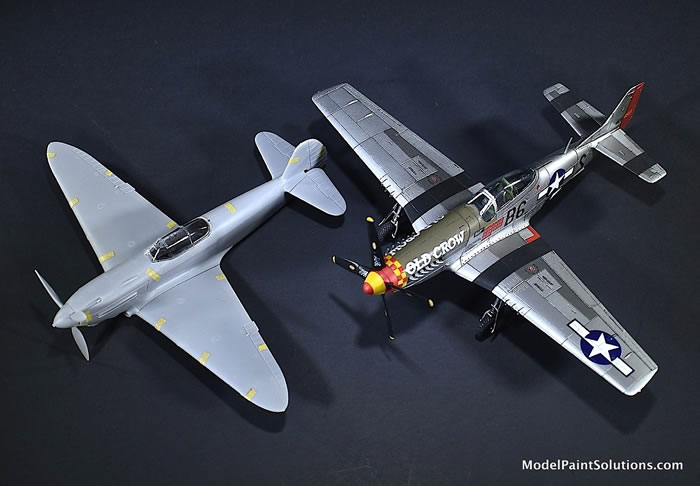
The Yak-1 was a maneuverable and fast aircraft. The composite-wooden structure made it easy to maintain and the engine proved to be reliable. It formed the basis for the subsequent development of multiple aircraft from the Yakovlev bureau. As such, it was the founder of a family of aircraft, with some 43,000 being built. As a reward, designer Alexander Yakovlev was awarded the Order of Lenin–the highest decoration bestowed by the Soviet Union, which included 100,000 rubles and a Zis motorcar.
Design and Development
Prior to World War II, Yakovlev was best known for building light sports aircraft.
The Yak-4 light bomber impressed the Soviet government enough to order the OKB to design a new fighter that utilized a Klimov M-106 V-12 liquid-cooled engine. Formal specifications were released on July, 29th 1939, and called for two prototypes: I-26-1; with a top speed of 620 km/h (385 mph) at 6,000 m (16,685 ft), combat range of 600 km (375 mi), a climb to 10,000 m (32,808 ft) of under 11 minutes, and armament of 2 × 7.62 mm ShKAS machine guns and 1 × 12.7 mm (0.5 in) Berezin BS heavy machine gun, and the I-26-2; with a turbocharged M-106 engine, a top speed of 650 km/h (404 mph) at 10,000 m (32,808 ft) and armament of 2 × 7.62 mm (.3 in) ShKAS machine guns. The designs took full advantage of Yakovlev OKB's experience with sports aircraft and promised agility as well as high top speeds. Since the M-106 was delayed, the design was changed to incorporate the Klimov M-105P V-12 engine with a 20 mm (0.8 in) ShVAK cannon in the "vee" of the engine block; a motornaya pushka mount.
The I-26-I first flew on January 13, 1940. The prototype suffered from oil overheating problems, which were never completely resolved, resulting in 15 emergency landings during early testing. On April 27, 1940 the I-26-1 crashed killing its test pilot Yu.I. Piontkovskiy. The investigation of the crash found that the pilot had performed two consecutive barrel rolls at low altitude in violation of the test flight plan. It was believed that during the first roll, the main landing gear became unlocked, causing it to crash through the wing during the second roll. It has been hypothesized that Piontkovskiy's deviation from the flight plan was caused by frustration that his aircraft was being used for engine testing while the I-26-2, built with the lessons of I-26-1 in mind, was already performing aerobatics.
Technical issues with sub-assemblies provided by different suppliers raised the I-26-2's weight by 400 kg (882 lb) above projected figures, which restricted the airframe to only 4.4 G. Oil overheating remained a problem as well. These defects caused the I-26-2 to fail government testing in 1940. Fortunately for Yakovlev, its competitors, I-200 (future Mikoyan-Gurevich MiG-3) and I-301 (future LaGG-3), also failed testing. Requested improvements were incorporated into the I-26-3, which was delivered for testing on October 13, 1940. Although it passed testing on December 9, 1940, the aircraft was still very much unfinished with unresolved engine problems.
Troublesome and slow testing and development concerned Soviet officials, since the I-26 was ordered into production under the name "Yak-1" on February 19, 1940; a mere month after the I-26-1 made its maiden flight. The goal of this gamble was to reduce the lag time between the prototype and production aircraft. As backups, the I-200 and I-301 were also ordered into production. Although the Yak-1 was slower than the I-200 and less armed than the I-301, it enjoyed the advantage of having been started earlier, which gave it a consistent lead in testing and development over its competitors. Due to the Axis invasion of the Soviet Union on June 22, 1941, development and implementation of several other designs, like the Polikarpov I-185, proved unfeasible. Yakovlev might have been Joseph Stalin's personal favorite, which may have also been in the Yak-1's favor.
Simultaneous manufacturing and testing of a design that required as many improvements as the I-26 wreaked havoc on the production lines. Almost 8,000 changes were made to the aircraft's blueprints by 1941. Incredibly, an additional 7,000 changes were implemented the following year and 5,000 more changes in 1942! Production was further slowed by shortages of engines, propellers, radiators, wheels, and cannons. Shortages of quality materials resulted in the plywood being torn from the wings of several aircraft in flight. To make matters worse, Factory No.292, which was the main manufacturer of Yak-1s, was bombed on June 23, 1943 and burned to the ground. Amazingly, production resumed amid the ruins on June 29. Due to loose tolerances, each aircraft was essentially unique, with workers performing the final assembly having the unenviable task of mating what often proved to be dissimilar components. This resulted in parts not being interchangeable between aircraft. Production of the Yak-1 ended in July 1944, with ~8,700 built.
Operational History
At the time of the German invasion of the Soviet Union on June 22, 1941, 425 Yak-1s had been built although many were en route or still disassembled. Ninety-two machines were fully operational in the Western Military Districts, but most were lost in the very first days of the war. The Yak-1 was designed with the goal of providing direct coverage of the Il-2 attack planes. Thus, most of the air combat took place below 4,000 m (13,123 ft), at low altitudes where the Yak-1 performed the best. The Yak-1 proved to have a significant advantage over its Soviet competitors. A full circle turn took just 17 seconds in the Yak-1M. The MiG-3, which had the best high-altitude performance, did poorly at low and medium altitudes, and its light armament made it unsuitable for ground attack. The LaGG-3 experienced a significant degradation in performance (as much as 100 km/h/62 mph on some aircraft) compared to its prototypes due to the manufacturer's inexperience with its special wooden construction, which suffered from warping and rotting when exposed to the elements. The Yak-1's plywood covering also suffered from the weather, but the steel frame kept the aircraft largely intact.
The aircraft's major problem early in deployment was fuel leaks caused by failure of spot-welded fuel tanks from vibration. Also troublesome was the fact that the canopy could not be opened under certain conditions potentially trapping the pilot in a falling aircraft. As a result, some pilots had the sliding portion of the canopy removed altogether. The first 1,000 Yak-1s had no radios. Installation of radio equipment became common by the spring of 1942 and obligatory by August of 1942. But, Soviet radios were notoriously unreliable and short-ranged so they were frequently removed to save weight.
Like the Rolls-Royce Merlin (a float carburetor-equipped engine), the M-105 could not tolerate negative G forces, which starved it of fuel. Moreover, the M-105 suffered breakdowns of both magnetos and speed governors and emitted oil from the reduction shaft.
In climb rate at all altitudes the Yak-1 was better than the Bf 109E but inferior to the Bf 109F– its main opponent. In addition, the Bf 109, with its automatic wing slats, had a lower stall speed and was more stable in sharp turns and vertical aerobatic figures. A simulated combat between a Yak (with M-105PF engine) and a Bf 109F revealed that the Messerschmitt had only marginally superior maneuverability at 1,000 meters (3,300 ft), although the German fighter could gain substantial advantage over the Yak-1 within four or five nose-to-tail turns. At 3,000 meters (9,800 ft), the capabilities of the two fighters were nearly equal, as combat was essentially reduced to head-on attacks. At altitudes over 5,000 meters (16,400 ft), the Yak was more maneuverable.
The Yak-1's armament would be considered too light by Western standards, but was typical of Soviet aircraft, the pilots preferring a few guns grouped on the centerline to improve accuracy and reduce weight. Wing guns were rarely used on Soviet fighters. They were often removed from lend-lease aircraft as they were from US-supplied Bell P-39 Airacobras. Avoiding the use of wing guns reduced weight and demonstrably improved roll rates (the same was true of the Bf 109F). The US and Britain considered heavy armament and high performance necessary, even at the cost of reduced agility, while the Soviets relied on the marksmanship of their pilots, coupled with agile aircraft. Even with the Yak-1's light armament, to reduce weight, modifications were made both on the front line and on about thirty production aircraft: the 7.62 mm ShKAS machine-guns were removed, retaining only the single ShVAK cannon. Nevertheless, these lighter aircraft were popular with experienced pilots, for whom the reduction in armament was acceptable, and combat experience in November 1942 showed a much-improved kill-to-loss ratio. Also, in the autumn of 1942, the Yak-1B appeared, with the more powerful M-105P engine and a single 12.7 mm UBS machine gun instead of the two ShKAS. Although this did not increase the total weight of fire appreciably, the UBS machine-gun was much more effective than the two 7.62 mm ShKAS’s. Moreover, the simple VV ring sight replaced the PBP gun-sight because of the very poor quality of the latter's lenses.
The Yak-1 had a light tail, and was easy to tip over and hit the ground with the propeller. To keep the tail down, technicians would sometimes remain on the rear fuselage during take off. Nonetheless, the Yak-1 was well liked by its pilots. The French Normandie-Niemen squadron selected the primitive Yak-1M (that had a cut-down fuselage to allow all-round vision) when it was formed, in March 1943. Twenty-four of these aircraft were sent to the all-female 586th Fighter Aviation Regiment, whose pilots included the world's only female aces: Katya Budanova (5 kills), and Lydia Litvyak (5-12 kills plus two shared). Litvyak flew Yak-1 "Yellow 44", with an aerial mast, at first in the 296th Fighter Aviation Regiment and then with the 73rd Guards Fighter Aviation Regiment, until her death in combat on August 1, 1943. Another ace that flew the Yak-1, Mikhail Baranov, scored all his 24 victories with it, including five on a day (four Bf 109s and one Ju 87, on August, 6 1942). The Yak-1 was also the first type operated by the 1 Pu?k Lotnictwa My?liwskiego "Warszawa" ("1st Polish Fighter Regiment 'Warsaw'").
Soviet naming conventions obscure the fact that the Yak-1 and its successors, the Yak-7, Yak-9, and Yak-3 – are essentially the same design, comparable to the numerous Spitfire or Bf 109 variants. Were the Yaks considered as one type, the 37,000 built would constitute the most produced fighter in history. That total would also make the Yak one of the most prolific aircraft in history, roughly equal to the best known Soviet ground attack type of World War II, the IL-2 Shturmovik. But losses were proportionally high, in fact the highest of all fighter types in service in the USSR: from 1941 to 1945, VVS KA lost 3,336 Yak-1s: 325 in 1941, 1,301 the following year, 1,056 in 1943, 575 in 1944 and 79 in 1945.
Variants
I-26 (also known as Ya-26)– This was the first prototype of the Yak-1 and progenitor of all Yakovlev's piston-engined fighters of World War II. Of mixed steel tube and wood construction, the lightweight I-26 displayed promising performance and was produced as the Yak-1.
UTI-26– The third and fourth I-26s were completed as dual control trainers, produced as a fighter as the Yak-7.
I-28– High-altitude interceptor prototype with Klimov M-105PD engine developed from I-26-2. Differed from I-26 in having an all-metal fuselage and tail and automatic, leading-edge slats on slightly smaller and reshaped wings. One aircraft was built, first flying on 1 December 1940. It did not enter production due to many deficiencies of the engine but served as the basis for high-altitude versions of Yak-7 and Yak-9.
I-30 (Yak-3) – Development of I-26 with an all-metal wing with leading-edge slats, weight and space savings were utilized for additional armament and greater fuel capacity. Two prototypes built – I-30-1 armed with 3 × 20 mm (0.8 in) ShVAK cannons and 2 × 7.62 mm (0.3 in) ShKAS machine guns, and I-30-2 with two additional ShKAS. It did not enter production. The name Yak-3 was re-used for a different fighter.
Yak-1 – Single-seat fighter aircraft; initial production version.
Yak-1b – ("b" was an unofficial designation; after October 1942, all Yak-1s were built to this standard). New bubble canopy with lowered rear fuselage, increased armor, ShKAS machine guns replaced with a single 12.7 mm (0.5 in) Berezin UBS, electrical and pneumatic firing of the weapons instead of the mechanical system, new control stick based on the Messerschmitt Bf 109 design, new gunsight, airtight fuselage, retractable tailwheel, improved engine cooling, Klimov M-105 PF engine with better low-altitude performance. The first flight (aircraft No.3560) took place in June 1942, with aircraft entering production in August. A total of 4,188 were built.
Yak-1M – Yak-3 prototype with a smaller wing, revised cooling intakes, reduced overall weight and upgraded engine. Two were built.
Yak-7UTI – Initial production version of the UTI-26.
Yak-7 – Conversions of Yak-7UTI and new production of fighter version of Yak-7UTI.
Several other Yak-1 variants did not receive special designations. These include prototypes with Klimov VK-106 and Klimov VK-107 engines, production aircraft capable of carrying external fuel tanks, production aircraft with the ability to carry 6 × RS-82 rockets or 2 × 100 kg (220 lb) bombs, and lightened versions for air defense.
General Characteristics:
- Crew: 1
- Length: 8.48 m (27 ft 10 in)
- Wingspan: 10.0 m (32 ft 10 in)
- Height: 2.64 m (8 ft 8 in)
- Wing area: 17.15 m2 (184.6 sq ft)
- Airfoil: root: Clark YH (14%); tip: Clark YH (10%)
- Empty weight: 2,316 kg (5,106 lb)
- Max takeoff weight: 2,884 kg (6,358 lb)
- Powerplant: 1 × Klimov M-105PF V-12 liquid-cooled piston engine, 940 kW (1,260 hp) at 700 m (2,300 ft)
- Propellers: 3-bladed constant-speed propeller
Performance:
- Maximum speed: 592 km/h (368 mph, 320 kn) at 4,900 m (16,100 ft)
- Range: 700 km (430 mi, 380 nmi)
- Service ceiling: 10,050 m (32,970 ft)
- Time to altitude: 5.4 min to 5,000 m (16,000 ft)
- Take-off run: 340 m (1,120 ft)
- Landing run: 560 m (1,840 ft)
Armament:
- Guns: 1 × 20 mm (0.8 in) ShVAK cannon and 1 × 12.7 mm (0.5 in) Berezin UBS machine gun.
(Edited from Wikipedia)
The initial impression is one of simplicity combined with amazing detail. There are not a lot of parts in this box (one bagged sprue) but close examination quickly reveals a very high level of detail with practically no flash to contend with.
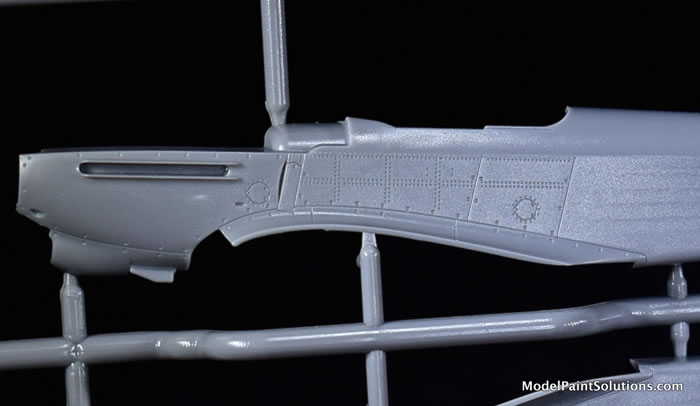
The parts layout and engineering are conventional and will allow for a straightforward and fast build. The sprue gates are small and most are placed on the mating faces of the parts—nice.
The surface detail is more than sufficient overall but the inscribed cowl fasteners are particularly well done. Likewise, the detail of the fuselage and wing panels is just awesome and will look very convincing under paint and washes.
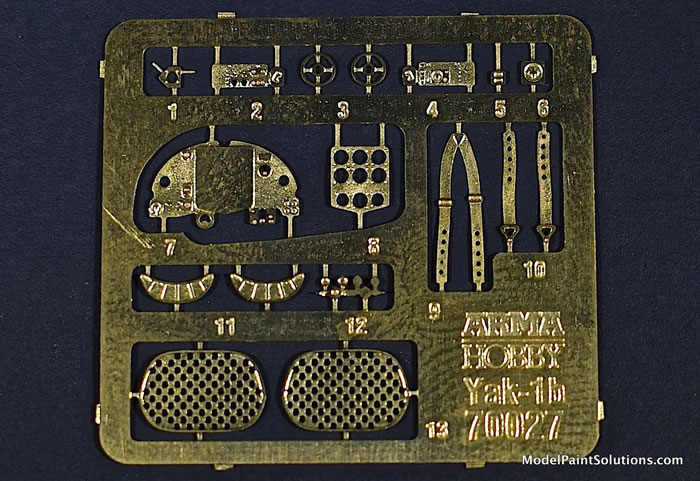
As usual, assembly begins with the cockpit, and here ARMA pulled off some nice engineering by printing decals that fit over PE replacement panels on the sides of the cockpit. Similarly, ARMA provides an instrument panel decal that is captured between 2 PE panel parts. On first inspection I had my doubts about how well this would work as the instrument decal lacks discernable needles for the gauge faces and alignment between all three parts would have to be spot-on to be convincing.
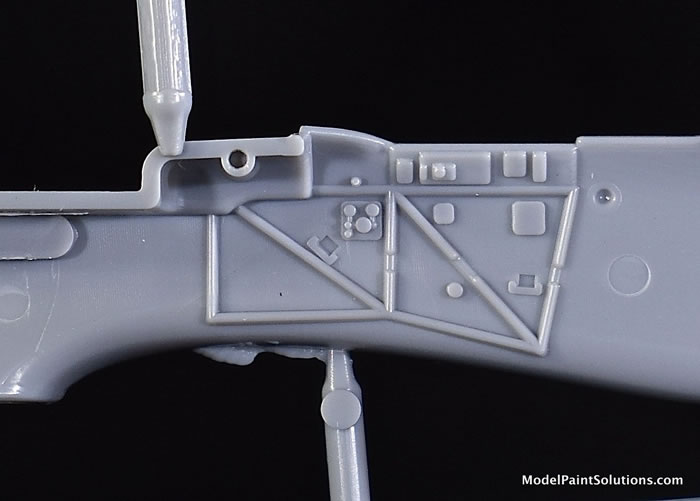
My concerns were unfounded. Not only did all three parts line up perfectly but the result is one of the nicest 1/72 instrument panels this modeler has ever seen. Well done, ARMA!
To augment the detail, individual cockpit side panels (with levers and handles) are provided along with a crisply molded seat complete with a “leather” back and PE harness.
The cockpit floor with seat, stick, and ruder pedals is an integral part of the upper wing halve. Fit between the assembled fuselage and wing is just spectacular requiring no filler. The result is an amazingly detailed cockpit right out of the box.
The fuselage is completed with the addition of the single-piece upper nose cowl, which results in a seam-free join obviating the need to fill right along the centerline of the model. It also permits a beautiful join between the single-piece canopy and fuselage. The addition of the single-piece horizontal stabilizer/elevator pieces and belly intake completes the airframe; looking like a Yak!
With all the exterior and cockpit detail it’s easy to overlook the beautiful job the folks at ARMA did on the main gear and wheel wells. The main wells are boxed-in and the fit of all components here is just beautiful. The result, complete with stiffeners, access panels, gear-stops and up-locks will look convincing and completely scale appropriate.
The main gear legs and tail wheel are nicely molded as are the main gear retract arms. The single piece wheels (always better than halves with the ensuing seams) have the tire ribbing and manufactures logo molded in restrained relief.
To round out the main wheel wells are crisply molded gear doors with rivet and fastener details on both their internal and external faces--very nice.
The clear parts (canopy and glass armour) are clear and nicely molded.
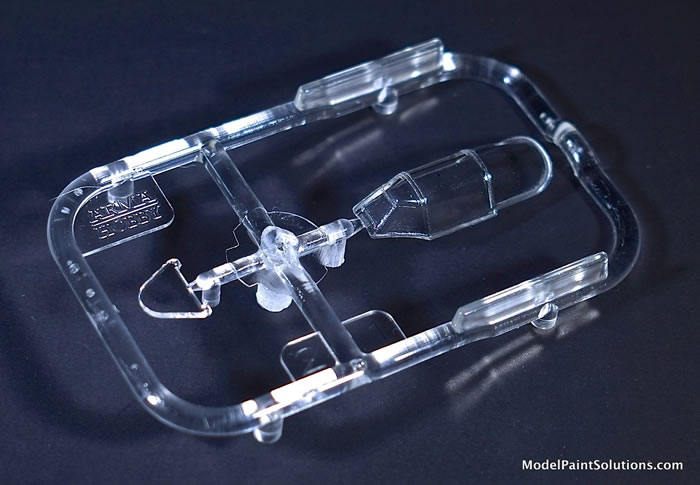
The masks (provided in the “Expert Set”) fit perfectly making prepping the canopy for paint much quicker and easier.
Marking Options
The decals, by Techmod, are crisply printed with good registration, hue, and color density. Markings for 6 airframes are provided as well as airframe stencil data for 2 models—nice.
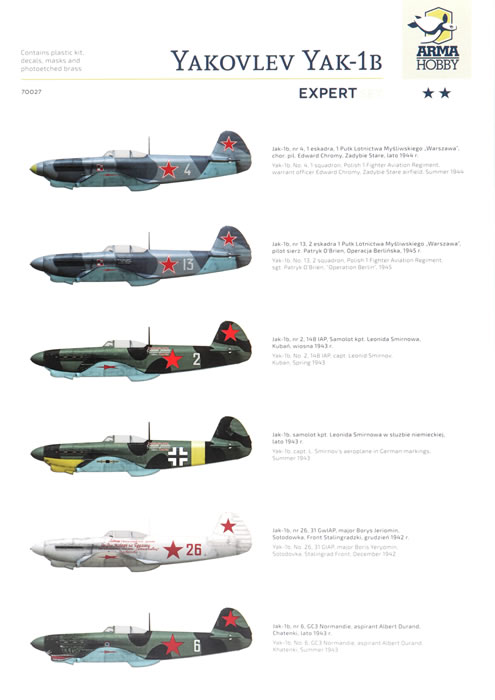
1: Yak-1b, No. 4, 1 Squadron, Polish 1 Fighter Aviation Regiment, warrant officer Edward Chromy, Zadybie Stare Airfield, Summer, 1944.
2: Yak-1b, No. 13, 2 Squadron, Polish 1 Fighter Aviation Regiment, (“Aeroplane allegedly founded by Prof. Wolf Messing”), Pilot, Sgt. Patryk O’Brien, Operation Berlin, 1945.
3: Yak-1b, No. 2, 148th IAP, Captain Leonid Smirnov, Kuban, Spring, 1943.
4: Yak-1b, same aircraft as above (Captain Smirnov’s) in German markings, Summer 1943.
5: Yak-1b, No. 26, 31st GIAP, Major Yeryomin, Solodovka, Stalingrad Front, December 1942. Note: Tactical number “26” was most probably over painted with white.
6: Yak-1b, No. 6, GC3 Normandie, Pilot Albert Durand, Khatenki, Summer 1943. Note: airframe had “fish scale” mottling on engine panels.
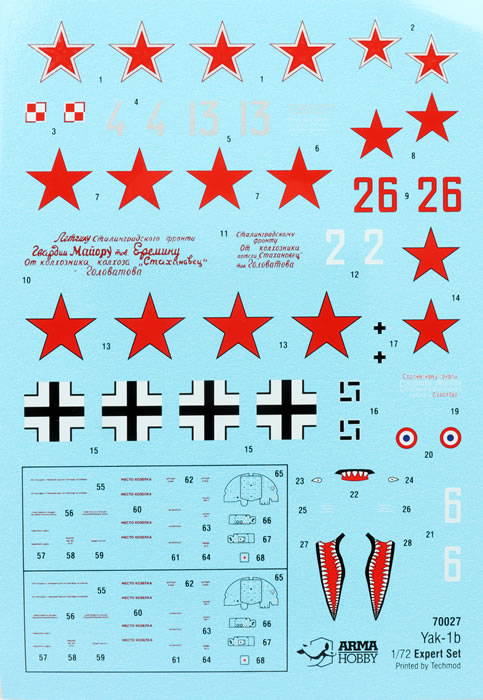
Airframe Stencil Data:
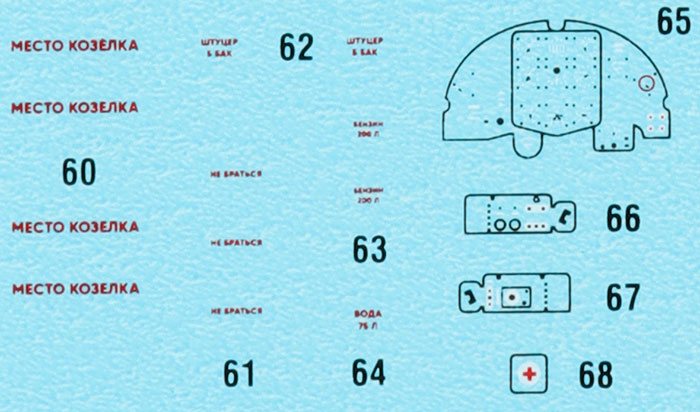
This is a real gem of a kit. The engineering is simple and spot-on, the details are abundant and scale appropriate, and the fit is exemplary, exceeding that of the ARMA Hurricane and that says a lot. As the astute reader has deduced, I had no self-discipline whatsoever and started this little hummer as soon as the parts were photographed. This kit drops together with practically no issues and is a joy to build. Stay tuned for a build article on the ARMA Yak-1b complete with details on how to match the required WWII Russian colors using Mission Model Paints.
For more on this review visit Modelpaintsolutions.com
Review kit provided by LightSpeedGlobal.
Review and Images Text Copyright © 2019 by John Miller
Page Created 26 December, 2019
Last updated
26 December, 2019
Back to HyperScale Main Page
Back to Reviews Page |
Home
| What's New |
Features |
Gallery |
Reviews |
Reference |
Forum |
Search